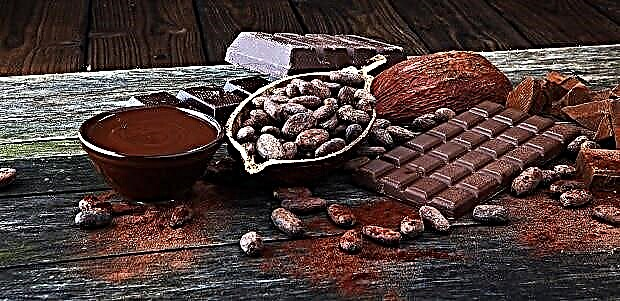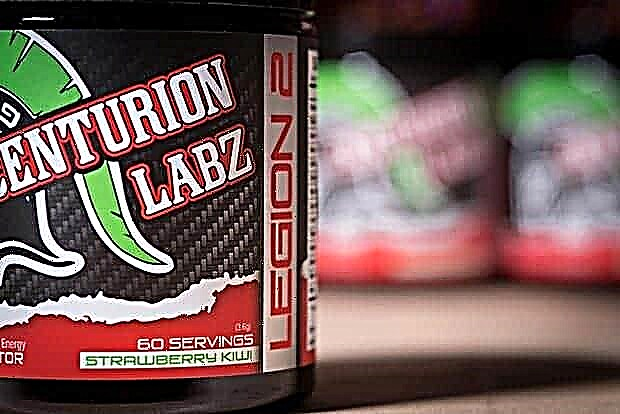Thiamine (vitamin B1, antineuritic) is an organic compound based on two methylene-linked heterocyclic rings - aminopyrimidine and thiazole. It is a colorless crystal, readily soluble in water. After absorption, phospholation occurs and the formation of three coenzyme forms - thiamine monophosphate, thiamine pyrophosphate (cocarboxylase) and thiamine triphosphate.
These derivatives are part of various enzymes and ensure the stability of amino acid conversion reactions and activate protein, fat and carbohydrate metabolism, stimulate hair growth and normalize the skin. Without them, the full functioning of vital systems and human organs is impossible.
The value of thiamine for athletes
In the training process, the achievement of the set goals directly depends on the endurance and functional readiness of the athlete for heavy physical exertion. For this, in addition to balanced nutrition and special diets, constant saturation of the body with vitamins, including thiamine, is required.
In any sport, the condition for success is a good psycho-emotional state of the athlete. The beneficial effects of vitamin B1 on the nervous system help with this. It also stimulates metabolism, promotes accelerated energy production and rapid muscle growth. Therefore, maintaining the required concentration of this compound in the blood and tissues is a prerequisite for the effectiveness of strength sports.
By participating in the processes of hematopoiesis and transporting oxygen to cells, the nutrient has a positive effect on endurance, performance and recovery time after intense exertion. These effects of the vitamin improve the tolerance of monotonous and prolonged exercise, which increases the effectiveness of training for long-distance runners, swimmers, skiers and other athletes of similar specializations.
The use of thiamine maintains muscle tone and good mood, contributes to an increase in strength indicators and an increase in the body's resistance to external harmful factors. This ensures that the athlete is ready for stressful loads and allows him to intensify the training process without harm to health.
Daily requirement
The speed and intensity of the course of biochemical processes in the body depends on the sex, age and style of human behavior. In children, the daily requirement is small: in infancy - 0.3 mg, by adulthood, it gradually increases to 1.0 mg. For an adult man leading a normal lifestyle, 2 mg per day is enough, with age, this rate decreases to 1.2-1.4 mg. The female body is less demanding on this vitamin, and the daily intake is from 1.1 to 1.4 mg.
Successful exercise requires an increase in thiamine intake. In some cases, the dosage may be increased to 10-15 mg.
Consequences of thiamine deficiency
Only a small part of vitamin B1 is synthesized in the intestines. The required amount comes from outside with food. A healthy body contains about 30 g of thiamine. Mostly in the form of thiamine diphosphate. It is quickly removed and no stocks are formed. With an unbalanced diet, problems with the gastrointestinal tract and liver, or increased stress loads, it may be deficient. This negatively affects the state of the whole organism.
First of all, this affects the functioning of the nervous system - irritability or apathy appears, shortness of breath when walking, a feeling of unmotivated anxiety and fatigue. The psycho-emotional state and intellectual abilities are deteriorating. Headaches, confusion, and insomnia may occur.
With a prolonged deficiency, polyneuritis develops - decreased skin sensitivity, pain in different parts of the body, up to the loss of tendon reflexes and muscle atrophy.
On the part of the gastrointestinal tract, this is expressed in a decrease in appetite, up to the onset of anorexia and weight loss. Peristalsis is disturbed, frequent constipation or diarrhea begins. There is an imbalance in the work of the stomach and intestines. Abdominal pain, nausea and vomiting occur.
The cardiovascular system also suffers - the heart rate increases, blood pressure decreases.
Prolonged thiamine deficiency provokes the development of serious diseases. Particularly dangerous is a nervous disorder called "beriberi", which, if left untreated, can lead to paralysis and even death.
Consuming alcohol interferes with the production and absorption of vitamin B1. In such cases, its lack causes the appearance of Gaie-Wernicke syndrome, in which the organs of the brain are affected, and encephalopathy may develop.
From the foregoing, it follows that when such signs appear, one should consult a doctor to clarify the diagnosis, and, if necessary, undergo treatment with thiamine-containing drugs.
Excess vitamin
Thiamine does not accumulate in tissues, it is slowly absorbed and quickly excreted from the body. Therefore, more than the norm is not supplied with food, and surpluses are not formed in a healthy body.
Dosage forms and their use
Vitamin B1 produced by the pharmaceutical industry belongs to medicines and is registered in the Radar Station (Register of Medicines of Russia). It is made in different versions: in tablets (thiamine mononitrate), in the form of a powder or solution for injection (thiamine hydrochloride) in ampoules with different concentrations of the active substance (from 2.5 to 6%).
The tablet and powder product is consumed after meals. In case of problems with digestion or if it is necessary to administer large doses to quickly restore the concentration of the vitamin, injections are prescribed - intramuscularly or intravenously.

© ratmaner - stock.adobe.com
Each drug is accompanied by instructions for use, which contains recommendations for dosage and rules of administration.
Overdose
An increased concentration can occur with an incorrect dosage of injections or an inadequate response of the body to the vitamin.
As a result, the body temperature may rise, itchy skin, spasmodic muscle contractions and lower blood pressure may appear. Small nervous disorders in the form of a state of causeless anxiety and sleep disturbances are possible.
What foods contain vitamin B1
Most foods in the daily diet contain significant amounts of thiamine. The record holder among them are: nuts, legumes, wheat and its processed products.
| Product | Vitamin B1 content in 100 g, mg |
| Pine nuts | 3,8 |
| Brown rice | 2,3 |
| Sunflower seeds | 1,84 |
| Pork (meat) | 1,4 |
| Pistachios | 1,0 |
| Peas | 0,9 |
| Wheat | 0,8 |
| Peanut | 0,7 |
| Macadamia | 0,7 |
| Beans | 0,68 |
| Pecan | 0,66 |
| Beans | 0,5 |
| Groats (oat, buckwheat, millet) | 0,42-049 |
| Liver | 0,4 |
| Wholemeal baked goods | 0,25 |
| Spinach | 0,25 |
| Egg (yolk) | 0,2 |
| Rye bread | 0,18 |
| Potatoes | 0,1 |
| Cabbage | 0,16 |
| Apples | 0,08 |

© elenabsl - stock.adobe.com
Interaction of vitamin B1 with other substances
Vitamin B1 does not mix well with all B vitamins (except pantothenic acid). Nevertheless, the combined use of thiamine, pyridoxine and vitamin B12 mutually enhances the beneficial properties and significantly increases the overall effectiveness of the action.
Due to pharmaceutical incompatibility (cannot be mixed) and negative effects while entering the body (vitamin B6 slows down the conversion of thiamine, and B12 can provoke allergies), they are used alternately, with an interval of several hours to a day.
Cyanocobolin, riboflavin and thiamine effectively affect the condition and growth of hair, and all three are used to treat and improve hair. For the above reasons and because of the destructive effect of vitamin B2 on vitamin B1, they are also used alternately. To reduce the number of injections, a special combined product has been developed and produced - combilipen, which contains cyanocobolin, pyridoxine and thiamine. But its price is much higher than that of monopreparations.
Magnesium works well with thiamine and helps to activate it. Long-term antibiotic treatment and excessive consumption of coffee, tea and other caffeinated products negatively affect the absorption of the vitamin and eventually lead to its deficiency.









